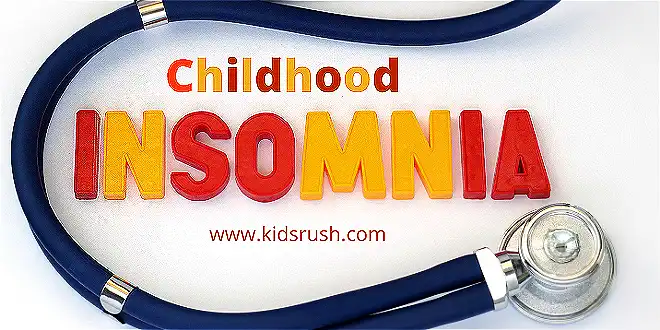It’s normal for children to take a while to settle down before bed, but if they seem to have a lot of problems, they may have a sleep disorder. In this article, we will tell you the symptoms, causes, and treatment of sleep disorders in children. Let’s start!
What causes sleep disorders in children
Possible sleep disorders in children can be based upon any or all of the following scenarios:
- he or she appears to be begging you for a new book, a song, a drink, or a trip to the bathroom for what feels like hours.
- Your child doesn’t sleep for very long periods of time at night.
- itchy legs are bothering your child at night
- your child snores loudly
This post seeks to provide you with tips on recognizing sleep disorders in children and when you ought to seek help for your child.
Sleeping patterns of children
0 to 3 months
New babies wake to eat, watch you or others, and then fall asleep again. Because sleep is essential to growth and development, so are food and interaction with caregivers.
3 to 12 months
Around 6 months, most babies sleep through the night, preferring to stay awake during the day for longer periods. As the baby approaches his or her first birthday, he or she becomes more likely to sleep through the night with naps throughout the day.
Beyond the one-year mark
At the beginning of this developmental period, children may take one longer nap a day instead of two shorter naps. By the preschool years, many children begin to gradually cut back on their napping altogether.
Discover: 6 Simple, Cheap Ways to Encourage Healthy Habits for Kids
Sleep disturbances
A baby can find it difficult to fall and stay asleep during nearly every stage of development due to their changing body and mind.
Your baby may struggle with separation anxiety, have restless sleep, and wake up in the middle of the night, with an unwillingness to stay in his crib. Playing with his toys could disturb him. He could also develop separation anxiety.
Occasionally a child gets too jittery to sleep, whether caused by too much excitement or exhaustion. He may also have trouble sleeping if he consumes food or drinks with caffeine.
Disruptions can also be caused by new surroundings or significant changes to one’s routine.
Occasionally sleep disruptions are caused by illness, allergies, or conditions including sleep deprivation, sleep apnea, night terrors, sleepwalking, and restless legs syndrome.
The symptoms of sleep disorders in children
You know the anticipation is too much for your child when they talk about their birthday over and over again.
You can also adjust when your child doesn’t sleep because of a nap-less day spent playing. Those temporary disturbances can be accommodated on occasion.
Even as your baby approaches 6 months of age, your baby may not be able to self-soothe at night if they wake in the night and want to be cuddled or rocked.
A child learning self-soothing does not mean asking him to “cry it out.” Self-soothing involves learning to calm oneself, not relying on someone else.
Childhood Insomnia

This is counted as one of the most famous sleeping disorders in children. Children with childhood insomnia have difficulty falling and staying asleep at least three days a week. Childhood insomnia can manifest in many ways, such as refusing to go to bed or having difficulties falling asleep without assistance, such as a favorite toy or blanket.
Delayed Sleep Phase Syndrome
The delayed sleep phase syndrome, also known as the sleepy-teen syndrome, refers to the hyperactive behavior that occurs in late childhood or early adolescence in response to an apparent normal shift in circadian rhythm.
These children have difficulty falling or staying asleep for longer than two hours past their normal bedtime, causing them to be unable to wake up in the morning on time for school or other activities. It is also common for children with this disorder to sleep much later on weekends than they would normally.
Hypersomnia
A narcoleptic who suffers from hypersomnia is characterized by excessive daytime sleepiness and temporary loss of muscle control as they fall asleep or wake up. Narcolepsy can also be associated with hypersomnia as it causes excessive daytime sleepiness.
Other sleep disorders in children such as chronic latency syndrome or obstructive sleep apnea also contribute to excessive daytime sleepiness, and such problems may be a sign of an underlying medical problem. Identification of hypersomnia needs prompt diagnosis and appropriate treatment.
Parasomnias
Children are susceptible to parasomnias when they are falling asleep, while deep sleep is occurring, while their eyes are moving rapidly, or when waking from REM sleep.
Most parasomnias—such as sleepwalking, being disoriented by unfamiliar surroundings, and experiencing nightmares—occur when children are awakened from non-REM sleep. During REM sleep, children can experience vivid nightmares.
Movement Disorders
People with movement disorders, such as restless legs syndrome and periodic limb movement disorder, experience unpleasant sensations in their legs and continuous urges to move their legs. The symptoms of these disorders typically get worse at night and can interfere with your child’s sleep. These conditions commonly occur together. In this regard, we recommend you to read the Causes of leg pain in children.
Obstructive Sleep Apnea
The body’s breathing is disrupted when a child with obstructive sleep apnea snores or gasps for air. Affected children are awakened frequently during the night.
It occurs in children who have large tonsils or adenoids or those with structural issues of the face or head such as a cleft lip and palate. Sleep apnea can also happen in children who have neurological disorders that weaken the breathing muscles.
Behavioral and Mental Health Disorders
A child suffering from behavioral disorders, such as attention deficit hyperactivity disorder and autism spectrum disorder, or mental health problems—such as anxiety and mood disorders—is often incapable of falling asleep. Many of the medicines prescribed for these disorders can also prevent sleep.
